Jean-Luc Ponty live in concert in São Paulo in 1980.
When I started playing jazz in the early 1960s I wanted to play with a standard rhythm section including a drummer, therefore I had to amplify my classical violin so that its volume would be loud enough. Unlike today the choice of violin pickups was very limited and I bought a DeArmond, made in the USA. which had to be put on the violin top, I also bought a guitar amplifier. It was OK with a jazz band but not in a louder context like with a rock band, because using a high volume with that pickup would easily trigger feedback.
At first I was disappointed that I could not get a traditional violin sound with this amplification, but then I decided to develop a new sound with it, which after all was more appropriate to play modern Jazz. I started thinking of electric violin as being a new and different instrument, like electric guitar compared to classical guitar.
The Barcus-Berry electric violin was therefore a much better choice when I started playing in louder contexts like with Frank Zappa’s band, The Mahavishnu Orchestra and my own jazz-rock band which all had an instrumentation of loud electric instruments. John Berry told me in the 70s that their violins were made by a luthier in Tyrol, Austria, who was sending these violins to them in California without any varnish. Barcus-Berry would then install their pickup in the bridge, and connect the wire to a volume control and a 1/4 inch phone jack output. They would then put one coat of aluminum paint on the violin body and two coats of paint in different colors, so it would lower the volume of the sound inside the violin body to avoid getting feedback when using very high volume with the pickup.
Also, having an electric violin allowed me to plug into sound effects devices initially conceived for electric guitar or electric keyboards and to experiment with echo delays, phase shifters, chorus etc. allowing me to create sounds never heard before with a violin.
Also, having an electric violin allowed me to plug into sound effects devices initially conceived for electric guitar or electric keyboards and to experiment with echo delays, phase shifters, chorus etc. allowing me to create sounds never heard before with a violin.
Solid body violins like the Zeta give the possibility to play at a very high volume level and still sound very present and violin-like, even in a huge auditorium, and zero risk of feedback.
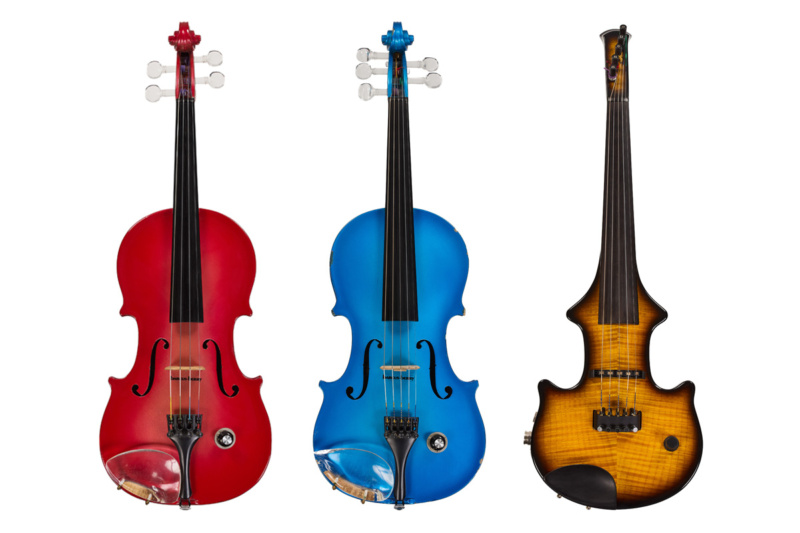
From left to right, Ponty’s red Barcus-Berry 4-string biolin made in 1969, Ponty’s blue Barcus-Berry 5-string violin made in 1978 and his ZETA 5-string violin solid body electric violin made in 2000
My father was a violin teacher and bought me a 1/4 size violin which I played when I started studying this instrument at 5 years old. He then bought a 1/2 size, then this 3/4 size made by Leon Bernardel, on which I started playing Mozart concertos around the age of 10-11 (also to be sold in the October sale).
Fast forward to 1960, when Jean-Luc won the Premier Prix at the Conservatoire de Paris in 1960. He immediately got a position with the Concerts Lamoureux while side-gigging in Paris jazz clubs by night. By age 22, Jean-Luc had picked the side of jazz, and released his debut solo album for Philips, Jazz Long Playing. In 1967, John Lewis of The Modern Jazz Quartet invited him to perform at the Monterey Jazz Festival in California. This was Jean-Luc’s first-ever American appearance – a major success which led to a contract with the World Pacific label. He went on to record 12 consecutive albums which all reached the top 5 on the Billboard jazz charts and sold millions of copies.
RED BARCUS-BERRY 4-string electric violin, made in 1969
Jean-Luc Ponty performing Lopsy Lu with songwriter and bassist Stanley Clarke, Chick Corea on piano and Billy Cobham on drums at the 1976 Down Beat Poll Winners awards.
The original Barcus-Berry company was founded in California in 1964 by violinist John Berry and audio engineer Les Barcus. They created small pickups to amplify and record string and wind instruments as well as piano and percussion.
In 1969 John Berry came to a rock club where I was performing in Los Angeles [..] and he gave me a red 4-string electric violin.
In 1969 John Berry came to a rock club where I was performing in Los Angeles named Thee Experience on Sunset Boulevard and he gave me a red 4-string electric violin.
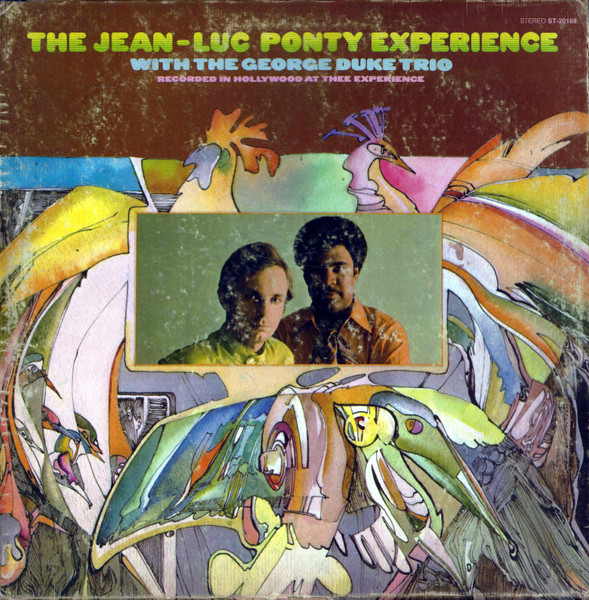
I used it for the first time a few weeks later for the recording of “KING KONG – Jean-Luc Ponty Plays The Music of Frank Zappa”, produced by Frank Zappa at the request of the Director of World Pacific Jazz, with which I had signed my first recording contract with an American label.
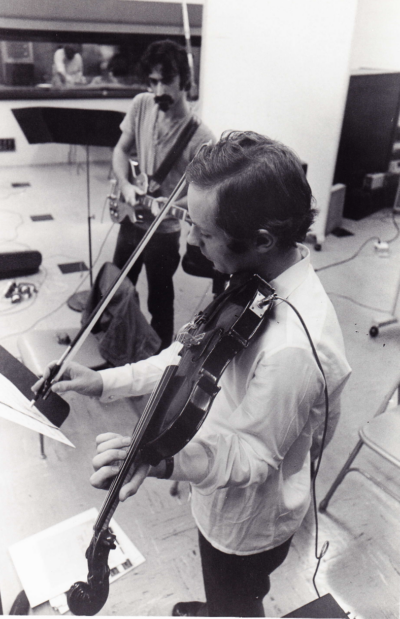
Recording King Kong with Frank Zappa in 1969
This red 4-string electric violin became my main instrument which I used in live performances and for the album OPEN STRINGS which I recorded in 1971 for the German label MPS, with the avant-guard jazz band I had at the time, with Joachim Kuhn on piano and guitarist Philip Catherine.
I used it also when Elton John asked me to record on two songs with him and his band on his album HONKY CHATEAU in 1972.
I then moved to Los Angeles in 1973 to join Frank Zappa’s band ’The Mothers of Invention’ and used this red violin on concert tours and on the album recording “Overnite-Sensation”.
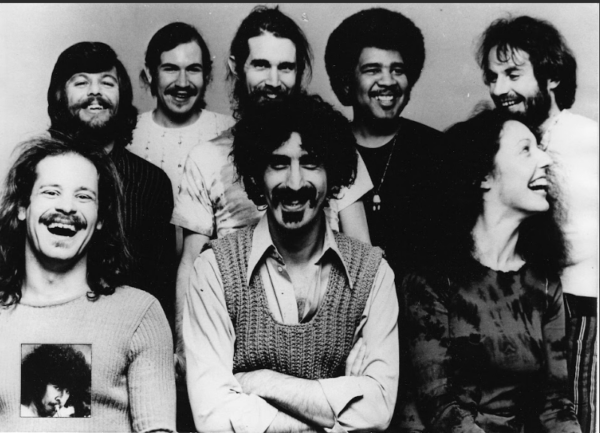
The band “The Mothers of Invention” from left to right: Bruce Fowler (trombone) – Ralphe Humphrey (drums) – Tom Fowler (bass-guitar) – Ian Underwood (saxophone-clarinet-flute) – Frank Zappa (bandleader-guitar-vocals) George Duke (keyboards) – Ruth Underwood (percussion) – Jean-Luc Ponty (violin), whose joke made everyone laugh during the photoshoot!
Jean-Luc Ponty performing alongside Frank Zappa and “The Mother of Invention at Dupree’s Paradise 1973.
At the end of 1973, I went back to France for a few days and recorded the album GRAPPELLI-PONTY for Musidisc, on which I also used this red violin. I had performed with Stéphane Grappelli before on French television and at the Berlin Jazz Festival, each time adapting to his repertoire and playing jazz standards, but for this album I wrote several compositions in my jazz fusion style.
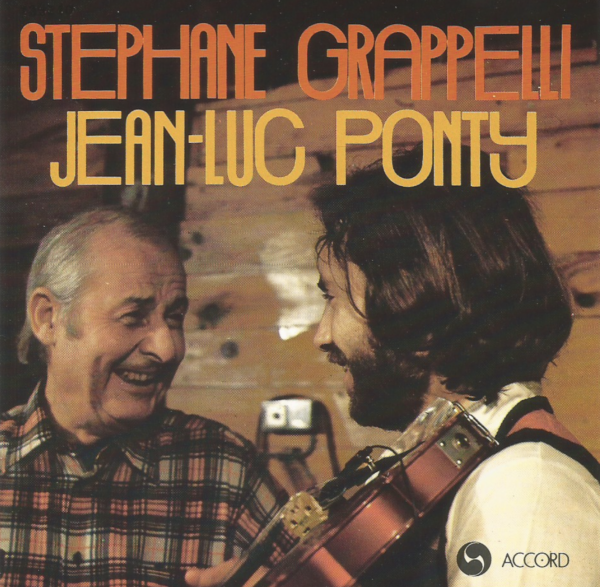
In 1974 I joined the Mahavishnu Orchestra founded by legendary guitarist/composer John McLaughlin. I toured worldwide with them and recorded two albums, “Apocalypse” with the London Symphony Orchestra, produced by George Martin (who produced The Beatles albums), and “Visions Of The Emerald Beyond”. I played my red Barcus-Berry on these concert tours and album recordings.
In 1975 I signed a contract with Atlantic Records in New York and released a first album named “Upon The Wings Of Music”. I also founded my first American band in Los Angeles and we started touring in the Fall throughout the USA.
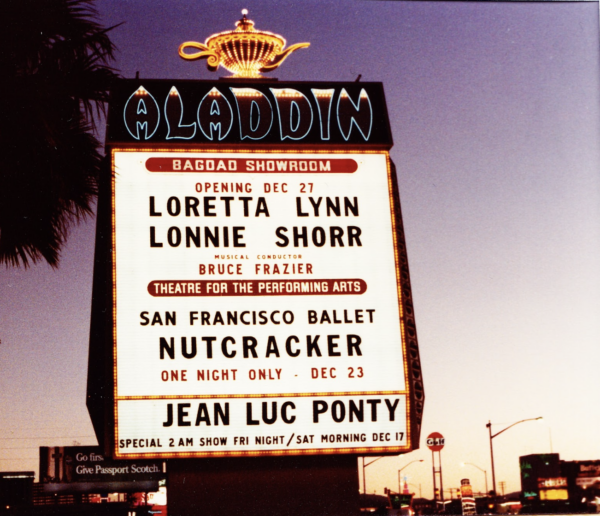
1977 billboard in Las Vegas
From 1976 to 1977 I kept playing this red violin on world tours with my band and on the albums “Aurora”, “Imaginary Voyage”, “Enigmatic Ocean” and “Jean-Luc Ponty Live”.
Jean-Luc Ponty performs “New Country” on the 1977 PBS Special, Fiddlers Three.
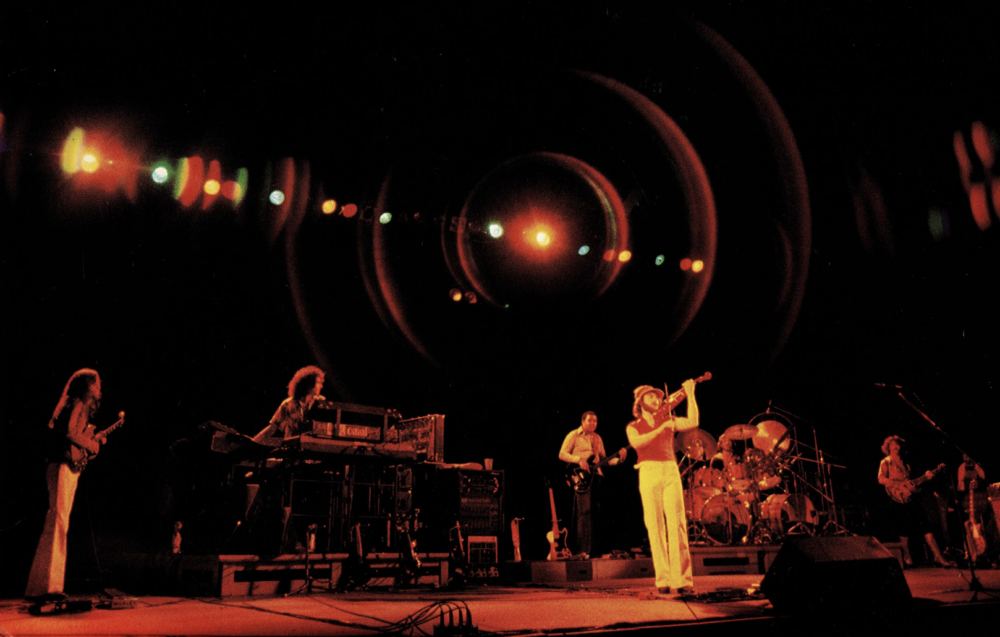
1978 Live concert
BLUE BARCUS-BERRY 5-string electric violin, made in 1978
In 1978, Barcus-Berry started making 5-string electric violins with a low C string, a combination of viola and violin but with a violin body. I chose a blue one. It took me a little while to get used to that 5th string, but once I did, I loved it and it became my main instrument for many years.
I chose a blue one. It took me a little while to get used to that 5th string, but once I did, I loved it and it became my main instrument for many years.
Jean-Luc Ponty performing Mirage at the 1982 Montreal Jazz Festival.
I played it worldwide on concert tours with my band until 1984 and on the albums “Cosmic Messenger” (1978) – “A Taste For Passion” (1979) – “Civilized Evil” (1980) – “Mystical Adventures (1982) – “Individual Choice” (1983).
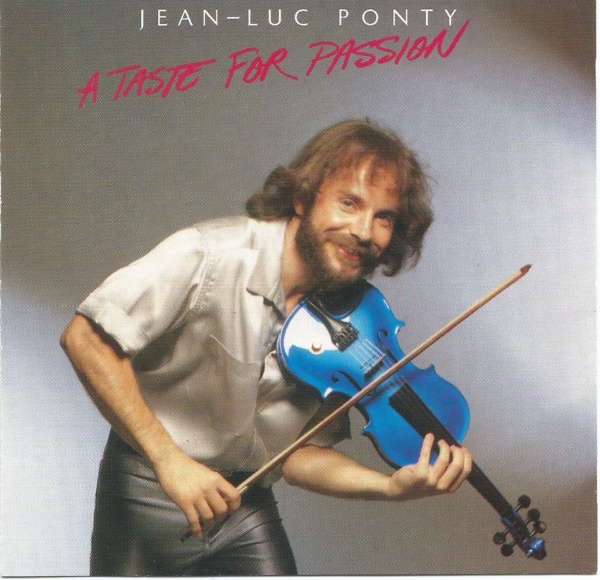
The first jazz video made by Louis Schwarzberg featured timelapse photography specifically shot for Ponty’s “Individual Choice” album.
I started playing it again on concert tours with my band in the early 2000s. It was my main instrument during the world tour I did with “Return To Forever IV” with Chick Corea, Stanley Clarke, Lenny White and Frank Gambale in 2011 and on the live two CD/DVD album which was recorded during that tour entitled “The Mothership Returns”.
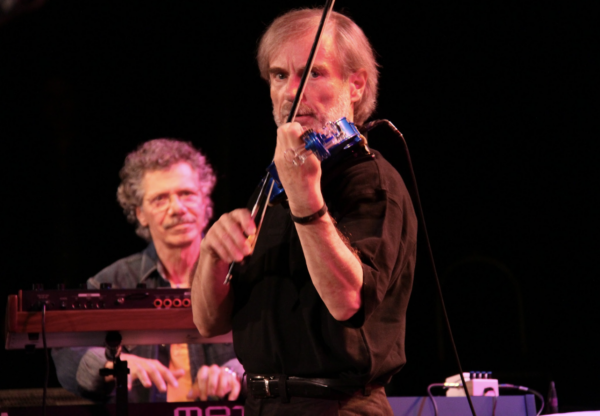
In 2011 with Chick Corea – Photo by Andrew Elliot
I also played this blue violin when I reunited with keyboardist George Duke in 2012 for a special concert at the Zappanale Festival in Germany.
In 2014 I formed a band with Jon Anderson, singer/co-founder of the British progressive rock band YES. This 5-string blue violin was the main instrument which I used that year for the live recording in Colorado of our CD/DVD named “Better Late Than Never”, and on concert tours with the AndersonPonty Band in the USA and Canada in 2015 and 2016.
ZETA 5-string violin solid body electric violin, made in 2000
In 1984 Zeta Music from California was the first company to successfully create a solid body electric violin. Their co-founder Keith McMillen asked me to try their 5-string prototype and give my opinion. I liked it but I asked that they correct some frequencies to make the sound rounder and warmer. I also suggested some changes on its shape. It became their Jazz Fusion model and I immediately used a white one on the album “Open Mind” recorded in 1984, with two of the greatest jazz musicians appearing as guest artists, George Benson on guitar on one track and Chick Corea on synthesizer on two other tracks. I also used it in my next album “Fables” recorded in 1986. Then in 1987, Zeta was the first company to come up with a MIDI system (Musical Instrument Digital Interface) for their Jazz Fusion model. This violin can be connected to a synthesizer to get a synthesizer sound in addition to the violin sound. I used that MIDI system for the first time in my album “The Gift of Time” recorded that same year for Columbia Records. On one track I used a bandoneon sound sample, on another track a flute sound and so on. I used that MIDI system again in my next album “Storytelling“ from 1988, this time using a trumpet sound sample.
Then they gave me a blue one in 1989 with improved electronics, which I played until 1992. Then upon my request they made a Jazz Fusion model with wood finish. It became the main instrument which I used on my concert tours until the late 1990s, including at the Jamboree Jazz Festival in Warsaw, Poland, in 1999, which was filmed by the local television network ‘Telewiza Polska’ and commercially released on a DVD and audio CD entitled “In Concert”.
Then in the early 2000s, Zeta Music decided to create Signature Series models with one having my name. I asked them to build the table and the back in maple, as I knew that the wood quality has an influence on the sound even on a solid body string instrument.
Jean-Luc Ponty recorded his 2003 album, “Jean-Luc Ponty, In Concert” live in Warsaw in 1999.
Then in the early 2000s, Zeta Music decided to create Signature Series models with one having my name. I asked them to build the table and the back in maple, as I knew that the wood quality has an influence on the sound even on a solid body string instrument. Therefore the Jean-Luc Ponty Signature model came out in the early 2000s and I played it on my concert tours as well as on the album “Life Enigma” recorded in 2001.
This was the first of my Signature Series model and the one which is on sale.
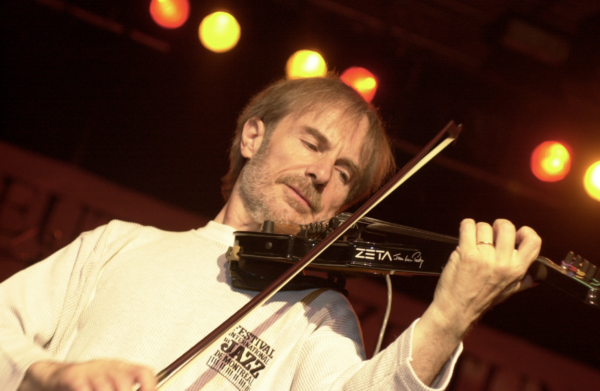
Dusseldorf Jazz Festival, Germany – 2003. Photo by Frederic Houis
For more info on Jean-Luc Ponty: https://www.ponty.com/biography